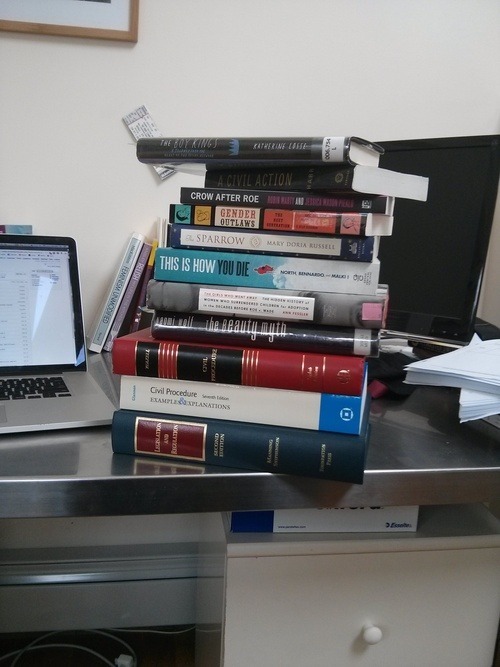The End of the Books: What I Learned
So I’m done with the great book reading project of 2013. (As I joked on Twitter, that means I’m done reading books forever, right?) I’ve compiled a list of recommendations, which are available here.
Some basic facts:
- I started January 1st, 2013.
- I finished September 7th, 2013.
- I read 176 books. (That’s about 22 per month or a book every 1.4 days.)
- 29% of the authors were people of color.
- 49% of the authors were women, 51% were men.
- The furthest behind I got was 16 books. (More about that.)
- I never really got that far ahead; maybe by one book, once or twice.
And here’s what I learned:
1) I can actually read 5 books a week (or one a day, if I don’t have a job).
When I started this project, I theorized that I could read 5 books a week without any real evidence that that was true, other than a rough idea of how long it took me to read a book. It turns out this is in fact a reachable goal, although it put a significant strain on my free time. When I was playing catch up over the summer, I could read a book a day, but it was not actually a ton of fun (despite having nothing but time on my hands.)
2) My hypotheses about my information diet without self-tracking were bullshit.
I’ve talked about this a little, but before I started keeping track of the diversity goals, I would have estimated I was reading 50/50 male/female authors. This was very much not true. Before I started to make dramatic changes to my reading calculus, it was very easy to reach for popular male authors instead of thinking critically about what I was reading. This goes ever more so for authors who are people of color - it’s really easy to read as a scifi/fantasy/pop science fan and not critically examine the types of work you’re encountering.
The self-tracking made me more conscious of how I made book choices - much less picking stuff off the shelf randomly, much more deliberative. I still took recommendations from friends, but it was tempered by knowing that I had to meet some more general goals.
I definitely got more and more committed to choosing books based on the diversity goals as I got closer to the end - and this actually meant that some of the books I read in the last month were my favorites. I was actually shocked by how hard it was for me to initially find books that peaked my interest by people of color. I suspect that was mostly because I hadn’t thought about my reading habits in those terms, and thus didn’t even know where to start. By the end, it was super easy to find more, which I consider possibly the biggest win of the entire thing.
3) It’s easy to get into ruts based on what you and your friends read.
See above, to some extent - but I definitely found that most of the recommendations I got from people I trust were for white dudes. It’s been really interesting to see how many of my favorite books, and the one’s I’ve been recommending were from authors I had never heard of or read before this year; Octavia Butler and N. K. Jemesin pop to mind as examples.
4) Reading leads to more reading.
At the beginning of the project, I definitely had days where I had no idea what to read next; both from the perspective of not having another book lined up, but also not knowing where to go to look for recommendations. Now I have a huge pile of books I’m super excited about (see below).
5) The book requirement led to some interesting incentives.
I hadn’t thought much at the beginning about how the requirements that the works be books would affect what I read. It changed a lot of my habits - it got to the point where I was just avoiding reading papers, because I knew they wouldn’t count towards what I was tracking.
Folks have suggested a word count goal, which would have been a good way to eliminate the weird incentives (books = good, everything else = bad). However, I have no idea how I would have kept track of that. I was fortunate to have Goodreads as a way to keep track of book numbers and my progress - although I’m struggling with how to export data from it for analysis.
Finally, what’s next? Well, this:

That’s some textbooks, but also the pile of books that’s next on my list.
Which brings me to the final lesson:
6) After this summer, the law school reading load is actually pretty light.
That’s an upside I didn’t foresee.